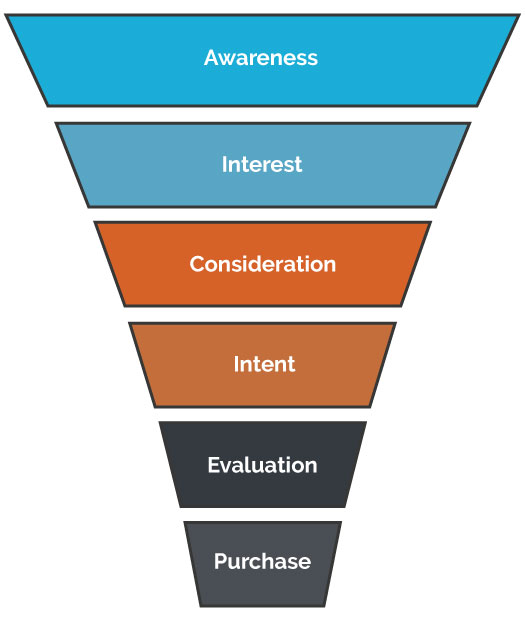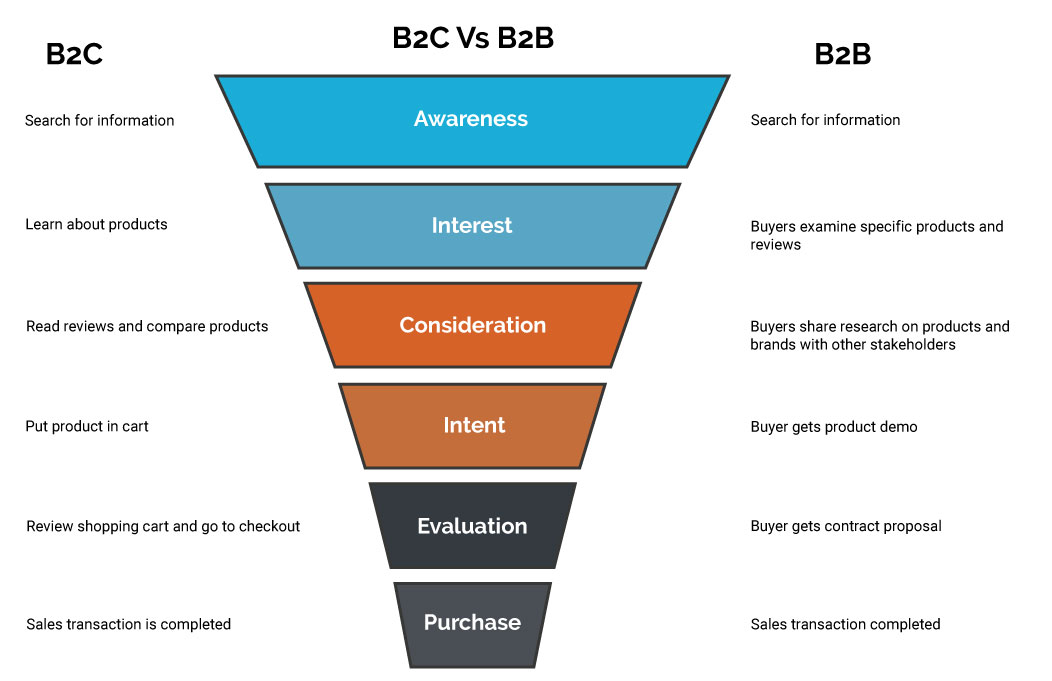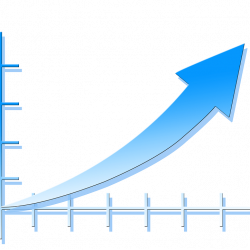The Marketing Funnel is a term you'll often come across when you're carrying out any form of advertising. However, no one really explains what it is or how it should be used within your specific business.
This post aims to explain what is meant by the Marketing Funnel and how it can be used within your business.
What is the Marketing Funnel?
The Marketing Funnel is simply a visualisation that helps you to understand the process of how you turn a lead into a customer. The basic principle of it is looking at how your business goes from capturing as many leads as possible, to narrowing it down to only those ready to make a purchase from you.
Ideally, you want to convert as many leads into customers as possible. However, there will always be some form of drop-out at some stage; which is where the funnel shape comes from.
Because each business has different goals and different processes, there is no single version of the Marketing Funnel. However, there are commonalities between them, so this post will focus on these so that you can then build on them to make it unique to your business.
The different Marketing Funnel stages
Let's look at the Marketing Funnel stage by stage to see what happens and when.

Awareness
This is your net being cast wide to capture everyone you possibly can. This is the stage where you carry out your general marketing activities, like newspaper ads and trade shows. Just get your name out there and pull in as many people as you can.
Interest
Once you've got your leads, teach them more about your business, your products and any other information you might think is useful to them. This is the opportunity to develop a relationship and introduce your proposition. Refine your marketing around industries, brands, newsletters etc.
Consideration
Your relationship with your leads has developed to a point that you can now class them as potential customers. You can now start to target them with your offers, while still nurturing them with targeted content and free trials.
Intent
Once your potential buyers have demonstrated they are interested in buying a product, but they're not sure who to buy from, they are in this area of the funnel. This is an opportunity for you to show why your product is the best option there is for their problem.
Evaluation
Buyers are now making their final decision about whether or not to buy a product from a specific brand. Typically marketers and sales teams work closely together in this stage to convince the customer to buy from you.
Purchase
Congratulations, you've made a sale! The lead has finally turned into a customer for you. Remember, if your customer has found the process easy and helpful, they can refer other people to you who can join the top of the funnel.
Does this change based on whether I'm selling to customers or businesses?
To help you understand the difference, we have modified the image from above to show what happens in the different stages for customers compared to businesses.

Key differences between customer and business Marketing Funnels
- Most customers go it alone (or with a small group of people, usually friends and family), while businesses typically have a large group that crosses different departments.
- Customers may never interact with a representative, especially when they are buying through e-commerce sites, whereas a business will typically interact with a sales representative when they get to the lower end of the funnel.
Does it still work like this though?
There is the argument that this is an outdated way of thinking about the Marketing Funnel. Leads are now able to do their own research and might only reach out to you to buy, or they might come to you during the intent stage when they're almost ready. This is what's known as entering mid-funnel.
Like we said at the beginning, the sales funnel isn't a one size fits all. There may be elements that just don't work for your business and that's ok. You just need to find the order that does work for you so you can implement it and make the most of what you do have.
Wait, this sounds more like sales, I thought it was the Marketing Funnel?
Times are changing, with the amount of nurturing your leads need and how you target them, there is now more marketing than there are sales in the funnel.
Whereas it used to be the sales would own around 50% of the funnel, they now only own closer to 20% of it with the rest being down to the marketing team.
Customers are becoming more dependent on digital content to do their own research before reaching out to buy, so you really need to make sure your marketing is at the top of its game so you can catch those leads before they're ready to buy.
There you have it
That was a whistle-stop tour of the Marketing Funnel. We understand it's not a one size fits all, so if you've found a new way of doing it that really works for your business, leave us a comment. You never know, it might help someone else experiencing the same problems.





